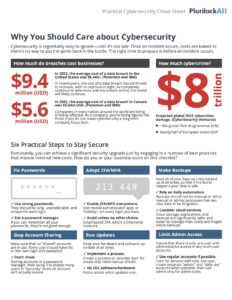In the rapidly evolving landscape of cybersecurity, managing and securing digital identities is a critical aspect. As technology advances, the need for robust identity management becomes more pronounced, especially in federal environments where sensitive data and national security are at stake. Federal Identity and Identity Federation are key components in addressing these challenges, providing a framework for secure access to resources while maintaining individual privacy and ensuring the integrity of sensitive information.
What is Federal Identity?
Federal Identity, in the context of cybersecurity, refers to the unique identification and authentication mechanisms employed within government systems. It involves the creation, verification, and management of digital identities for individuals accessing federal resources. This includes government employees, contractors, and authorized users.
Federal identity solutions often include the use of Personal Identity Verification (PIV) cards, Common Access Cards (CAC), or other smart cards that store cryptographic credentials. These technologies enhance security by requiring multifactor authentication, typically combining something the user knows (like a password) with something the user possesses (like a smart card).
The Significance of Federal Identity
- Security and Access Control: Federal agencies deal with highly sensitive information, ranging from classified documents to personally identifiable information (PII). Ensuring that only authorized individuals have access to these resources is paramount. Federal identity solutions provide a robust framework to authenticate users and control access based on their roles and responsibilities.
- Regulatory Compliance: Governments are subject to various regulations and compliance standards to protect national interests and citizens’ privacy. Federal identity solutions play a crucial role in meeting these compliance requirements, such as the Federal Information Processing Standards (FIPS) and the National Institute of Standards and Technology (NIST) guidelines.
- Prevention of Unauthorized Access: Unauthorized access to government systems can have severe consequences, including data breaches and espionage. Federal identity solutions act as a barrier against unauthorized access attempts, reducing the risk of malicious actors infiltrating sensitive networks.
- Enhanced Accountability and Auditing: Federal identity solutions not only authenticate users but also provide a means to trace and audit user activities. This accountability is essential for investigating security incidents, ensuring that any malicious activities can be traced back to the responsible party, and taking appropriate action.
Identity Federation in the Federal Landscape
Understanding Identity Federation
Identity Federation is a concept that goes beyond individual organizations or agencies. It involves establishing trust relationships between different entities to enable seamless and secure access to resources across multiple domains. In the federal landscape, this means allowing users to access services and data not only within their agency but also across various government departments.
- Single Sign-On (SSO) Capabilities: Identity Federation often incorporates SSO capabilities, allowing users to log in once and gain access to multiple systems without needing to reauthenticate. This enhances user experience while maintaining security standards.
- Interoperability: Federal agencies often need to collaborate on projects or share information. Identity Federation enables interoperability by creating a standardized way for different systems to recognize and trust each other’s authentication mechanisms.
- Cross-Agency Collaboration: In the federal ecosystem, collaboration is crucial. Identity Federation facilitates secure collaboration by allowing users from one agency to access resources in another agency without the need for separate credentials.
Why Identity Federation Matters in Federal Cybersecurity
- Efficient Resource Utilization: Identity Federation streamlines access to resources, reducing the need for duplicate user accounts and authentication processes. This efficiency not only saves time but also enhances overall productivity within the federal ecosystem.
- Improved User Experience: Federal employees and collaborators often work across multiple agencies. Identity Federation ensures a smoother user experience by eliminating the need to remember and manage multiple sets of credentials. This, in turn, reduces the likelihood of password-related security issues.
- Cost Savings: By eliminating the need for redundant identity management systems and processes, Identity Federation contributes to cost savings. Federal agencies can optimize their cybersecurity infrastructure and allocate resources more effectively.
- Agile Response to Emerging Threats: In a rapidly evolving threat landscape, federal agencies must be agile in their response to cybersecurity challenges. Identity Federation enables a more flexible and responsive security architecture, allowing for quick adaptation to emerging threats.
- Cross-Domain Information Sharing: Many federal initiatives involve collaboration between different agencies. Identity Federation enables secure cross-domain information sharing, ensuring that sensitive data can be exchanged without compromising security.
In-Depth Analysis of the Importance of Federal Identity and Identity Federation
1. National Security Implications
National security is a paramount concern for federal governments, and the compromise of digital identities can have far-reaching consequences. Federal Identity solutions play a crucial role in ensuring that individuals accessing sensitive information or critical infrastructure are precisely who they claim to be. Identity Federation extends this assurance across agencies, preventing unauthorized access that could pose a significant threat to national security.
Case Study: Cyber Espionage and National Security In recent years, state-sponsored cyber espionage has become a major concern for governments worldwide. Infiltration into federal systems can provide adversaries with valuable intelligence and compromise the integrity of critical systems. Federal Identity and Identity Federation act as essential layers of defense against such threats, ensuring that only authenticated and authorized individuals have access to classified information.
2. Privacy and Civil Liberties
As federal agencies collect and manage vast amounts of personal and sensitive information, the protection of privacy and civil liberties becomes a critical consideration. Federal Identity solutions are designed not only to secure access but also to uphold the privacy rights of individuals. By implementing robust authentication processes and access controls, federal systems can strike a balance between security and individual privacy.
Privacy Concerns in Federal Identity Management Issues such as the unauthorized collection of biometric data or the misuse of personal information are serious concerns. Federal agencies must continuously evaluate and update their identity management practices to align with evolving privacy standards. Identity Federation, by enabling secure collaboration while respecting privacy rights, contributes to a cybersecurity framework that safeguards both national interests and individual freedoms.
3. Challenges and Risks in Federal Identity Management
While Federal Identity and Identity Federation offer substantial benefits, they also come with challenges and inherent risks.
a. Insider Threats Even with robust identity management systems in place, insider threats remain a persistent risk. Malicious actors within an organization, with legitimate access credentials, can exploit their privileges for nefarious purposes. Federal agencies must implement continuous monitoring and behavior analytics to detect and respond to suspicious activities.
b. Credential Management The management of credentials, especially in large federal organizations, is a complex task. Ensuring that credentials are secure, regularly updated, and not shared among users requires dedicated efforts. Identity Federation exacerbates this challenge, as compromise in one domain can potentially impact multiple interconnected systems.
c. Emerging Technologies and Standards The rapid evolution of technology introduces both opportunities and challenges. New authentication methods, such as biometrics or behavioral analytics, bring enhanced security, but they also require careful implementation and integration. Federal agencies must stay abreast of emerging technologies and evolving standards to adapt their identity management practices accordingly.
4. International Collaboration and Standards
In an interconnected world, where cyber threats transcend borders, international collaboration is essential. Federal Identity and Identity Federation can benefit from standardized approaches and interoperability across nations. Collaborative efforts in developing international standards for identity management can enhance the collective cybersecurity posture, ensuring a united front against global threats.
Interoperability Challenges However, achieving international collaboration and interoperability comes with challenges, including differences in legal frameworks, cultural considerations, and varying levels of technological maturity. Establishing trust relationships between federal systems of different nations requires careful negotiation and adherence to mutually agreed-upon standards.
5. Future Trends and Considerations
As technology advances, the landscape of federal identity and identity federation is likely to undergo significant transformations. Several trends will shape the future of these cybersecurity components:
a. Decentralized Identity The concept of decentralized identity, enabled by blockchain and distributed ledger technologies, is gaining traction. Decentralized identity empowers individuals to control their own digital identities, reducing reliance on centralized authorities. Federal agencies may need to adapt their identity management frameworks to incorporate decentralized identity principles.
b. Zero Trust Security Models The Zero Trust security model, which assumes that no entity, whether inside or outside the network, should be trusted by default, is becoming increasingly popular. Federal identity solutions will likely evolve to align with Zero Trust principles, requiring continuous authentication and authorization, even for trusted entities.
c. Artificial Intelligence in Identity Management The integration of artificial intelligence (AI) in identity management processes offers the potential for more robust threat detection and prevention. AI-driven solutions can analyze user behavior, detect anomalies, and respond to security incidents in real-time. Federal agencies may explore the incorporation of AI technologies to enhance the efficacy of their identity management systems.
Conclusion
Federal Identity and Identity Federation are integral components of cybersecurity in the government sector. As technology continues to advance, and cyber threats become more sophisticated, the need for robust and adaptive identity management practices becomes increasingly critical. Federal identity solutions provide a foundation for secure access to resources, while Identity Federation enhances collaboration and interoperability across government agencies.
The importance of Federal Identity and Identity Federation extends beyond mere technical considerations. These components play a pivotal role in national security, safeguarding sensitive information and critical infrastructure. Moreover, they must navigate complex challenges related to privacy, international collaboration, and emerging technologies.
As we look toward the future, federal agencies must remain vigilant, continuously updating their identity management strategies to address evolving threats and leverage emerging technologies. The ability to strike a balance between security, privacy, and collaboration will be paramount in ensuring a resilient and adaptive cybersecurity framework for federal environments.














